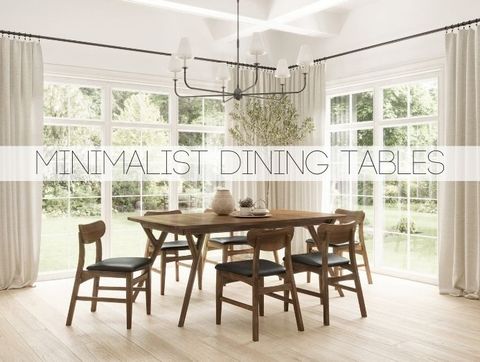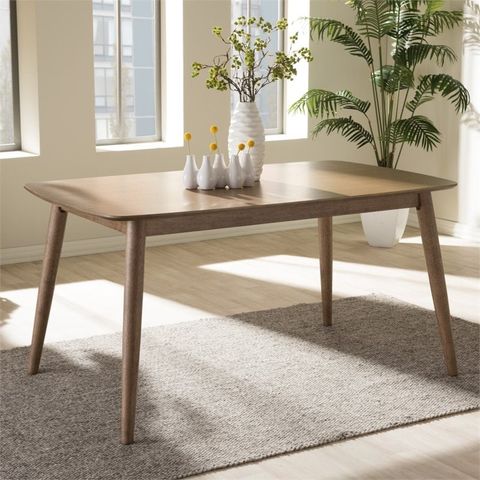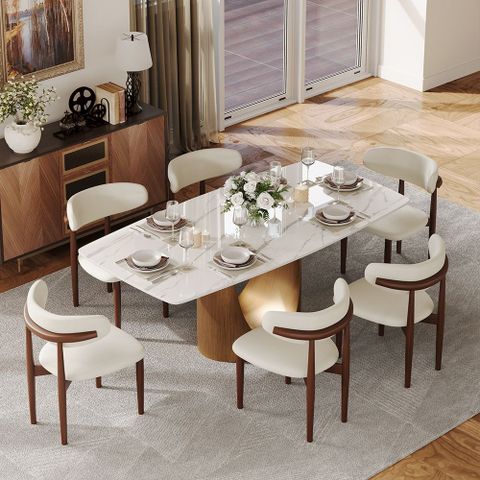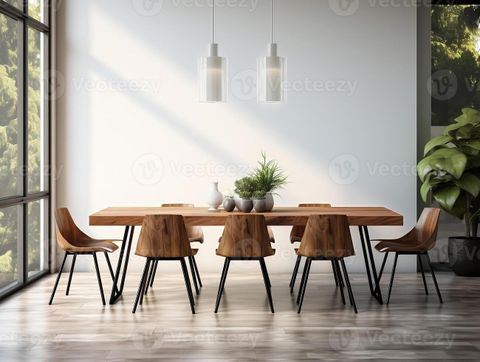Imagine a dining room where every element tells a story of thoughtful design and environmental consciousness. This isn’t just about looking good – it’s about creating spaces that honor both our needs and our planet’s future. When modern minimalism meets environmental responsibility, something magical happens. The result is dining rooms that feel fresh, clean, and purposeful while also contributing positively to the world around us.
The way we eat and where we eat has undergone a dramatic transformation in recent years. No longer is the dining room simply a place for meals – it’s become a reflection of our values, our lifestyle, and our commitment to the environment. This evolution has brought us to a fascinating intersection where sleek, uncluttered design meets deep ecological awareness. Today’s conscious homeowners are discovering that the most beautiful spaces often emerge when they prioritize both aesthetic simplicity and environmental stewardship. It’s a shift that goes beyond trends, representing a fundamental change in how we approach our living spaces and our relationship with the natural world.
The Philosophy Behind Minimalist Dining
Minimalism in dining rooms isn’t about deprivation or starkness. Instead, it’s about intentional selection and quality over quantity. Every piece in a minimalist dining space serves a purpose, whether functional or emotional. Consider how a single wooden dining table can anchor an entire room while speaking to your values. These designs often feature clean lines, neutral colors, and carefully chosen elements that create harmony rather than chaos. The philosophy suggests that less truly can be more – especially when those few items are thoughtfully selected and crafted with longevity in mind. Think about how a simple ceramic bowl might hold more meaning than a dozen decorative objects. This approach helps reduce the mental load of decision-making while creating spaces that feel calm and restorative.
Choosing Sustainable Materials and Furniture
The foundation of environmentally responsible dining rooms lies in material selection. Reclaimed wood, bamboo, and recycled metals offer beautiful alternatives to traditional materials. These choices don’t compromise on aesthetics – in fact, they often add character and uniqueness to spaces. For instance, a dining table made from reclaimed barn wood carries stories of agricultural heritage while reducing demand for new timber. Similarly, bamboo furniture offers durability and sustainability, growing rapidly and requiring minimal resources. Natural stone and recycled glass countertops provide elegance without environmental harm. When shopping for pieces, look for certifications like FSC (Forest Stewardship Council) or Cradle to Cradle. These labels ensure that products meet rigorous standards for environmental impact and ethical production. Remember, the best sustainable choices often tell stories of craftsmanship and care.
Energy Efficiency in Modern Dining Spaces
Lighting plays a crucial role in both ambiance and energy consumption. LED fixtures offer significant advantages over traditional bulbs, using up to 80% less energy and lasting much longer. Smart lighting systems allow you to adjust brightness and color temperature based on time of day and activity. Consider installing dimmer switches or motion sensors to reduce unnecessary power usage. Solar-powered options can even eliminate electricity costs entirely for outdoor dining areas. Energy-efficient appliances, such as induction cooktops or slow cookers, also contribute to overall sustainability. These technologies don’t just save money – they demonstrate respect for planetary resources. A well-lit dining room becomes a showcase for both beauty and responsibility, creating an atmosphere that feels both modern and mindful.
Reducing Waste Through Conscious Choices
Waste reduction in dining rooms starts with thoughtful purchasing decisions. Buy fewer items, but invest in higher-quality pieces that will last longer. Consider secondhand options or local artisans who build with care and intention. Vintage finds often carry unique charm that mass-produced items cannot match. Compostable serving dishes, reusable cloth napkins, and glass containers all contribute to waste reduction. Many designers now focus on creating pieces that can be easily repaired or upgraded rather than discarded. This approach makes sense economically and environmentally. When you choose timeless pieces over trendy ones, you’re essentially investing in both your home and the planet’s future. The goal isn’t perfection – it’s progress toward more sustainable habits.
Natural Elements and Indoor Plants
Incorporating natural elements brings life and freshness to any dining space. Indoor plants serve multiple purposes – they purify the air, create visual interest, and connect us to nature. Choose low-maintenance options like snake plants, pothos, or ZZ plants for busy households. These hardy varieties require minimal care while providing maximum benefits. Natural materials such as jute rugs, cotton textiles, and stone accents enhance the organic feel of a room. Consider incorporating elements like driftwood, river stones, or dried botanicals as focal points. These touches remind us of the earth’s beauty and inspire gratitude for natural resources. The presence of greenery transforms a dining room from merely functional to genuinely nurturing.
Designing for Longevity and Adaptability
True environmental responsibility means designing for the long term rather than temporary trends. Choose classic shapes and neutral colors that won’t date quickly. Modular furniture allows for easy reconfiguration as needs change over time. This flexibility reduces the need for replacements and extends the lifespan of furnishings. Consider multi-functional pieces – a dining table that can also serve as a work surface, or storage benches that double as seating. The goal is to create spaces that evolve with your lifestyle while maintaining their core appeal. This approach prevents the cycle of constant replacement that contributes to waste and environmental strain. When furniture lasts decades rather than seasons, everyone wins – including the planet.
Creating a dining room that embodies both modern minimalism and environmental responsibility isn’t just about following the latest trends – it’s about making thoughtful decisions that reflect our values and our commitment to future generations. These spaces don’t have to sacrifice beauty for sustainability; instead, they often reveal how the two concepts can beautifully complement each other. Every choice, from the materials used to the lighting selected, contributes to a larger conversation about how we live and interact with our environment. As we continue to navigate an increasingly complex world, our homes remain powerful places where we can practice what we preach. A dining room designed with both simplicity and sustainability in mind becomes more than just a space for meals – it becomes a daily reminder of our connection to the earth and to each other. The journey toward eco-conscious dining isn’t about perfection – it’s about intentional progress, one thoughtful choice at a time.














